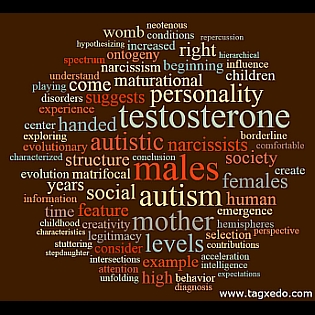 For all its charms, the weblog platform does also bury older content for no better reason than that newer material has come along. While we all like to feel we’re improving, whether you are writing blog posts, delivering babies, or making them yourself, you are likely not only as good or as interesting as your most recent effort. Neither are we.
For all its charms, the weblog platform does also bury older content for no better reason than that newer material has come along. While we all like to feel we’re improving, whether you are writing blog posts, delivering babies, or making them yourself, you are likely not only as good or as interesting as your most recent effort. Neither are we.
In remedy, the entries linked below are accompanied by brief summaries of their content, as it appeared here a year ago this week.
•
•
•
2009
In a piece that continues to receive consistent traffic from those interested in the relationship between autism and narcissism, Andrew Lehman lays out his thinking on what seems to be a healthy form of narcissism which occupies a spectrum adjacent to autism. Parting ways with Simon Baron-Cohen’s view of autism as an “extreme male” brain, he suggests that autism is instead “an example of an exaggeration of the left spectrum or older genotype, the artist/dancer prototype characteristic of matrifocal social structures.”
I’m slowly coming to the conclusion that many male narcissists are not exhibiting a personality feature born of past trauma. They are natural narcissists basking in the center of attention, comfortable with being on display. Creativity is often a hallmark of their personality. I’m playing with the idea that these self-oriented males are examples of the ancient genetic archetype described in detail when I discuss evolution, males that often come from families of left-handers. These are the male performers, often playing to gain the attention of a female, not very hierarchically inclined, but very focused on achieving attention. It is no mistake that artists are often narcissists. If the first stage of human development is characterized by an extraordinary surge of creativity with the self being produced from a single cell, then the next stage is awareness of the self just created. For humans, creativity and self awareness go hand in hand.
• Road Map
Here Andrew Lehman identifies and rejects a narrow patrifocal framing of evolutionary possibilities, looking beyond natural selection to matrifocal influences on human evolution, in a sense as literal as the blood hormone levels of mothers through the ages. Matriarchal social structure and sexual selection by females are also proposed as having been overlooked as factors in human evolution, all with implications for the condition we know as autism.
There are major intersections in our evolution, as there are major events in our own ontogeny or personal unfolding. A hundred years ago, this perspective was conventional. The Darwinian synthesis of the mid 20th century, accompanied by the cultural capitulation to Social Darwinist perspectives, narrowed orthodox theorizing to a thin band of back roads hypothesizing around an allegiance to the idea of random origins. Understandings informed by shifting scales, for example, comparing biology, society and ontogeny, were considered unproductive and became unfashionable.
Perhaps no single feature of a human being so informs both our evolution and our children’s lives more than the testosterone and estrogen levels of the mother while the child is in the womb. Baron-Cohen understands the influence of testosterone but hasn’t assimilated the repercussions. This feature is one of the major physiological intersections informing the directions we evolve. High testosterone mothers birth low testosterone males and high testosterone females. Low testosterone females create high testosterone males and low testosterone females. Mother’s blood suggests and prescribes social structure, evolutionary trajectories and individual human skill/challenge constellations, simultaneously.
Ideas in the preceding two essays are elaborated upon, describing how they play into modern autism.
When the mother’s testosterone levels are high, she is propelling her children backwards in evolutionary time. Backwards in evolutionary time for humans is away from patrifocal social structure and towards matrifocal social structure. Males experience more maturational delay, females more maturational acceleration. A mother with elevated testosterone levels (a woman comfortable in a matrifocal society) sends her children on a journey to the society of her societal and evolutionary precursors.
Eventually, we go back far enough in time to when males were first acquiring facility with spoken language. Go back even further in time and females are first acquiring facility with spoken language. Hence the higher number of males exhibiting autism, Asperger’s, stuttering and other conditions characterized by maturational delay. Males don’t have to go very far back in time, compared to females, to begin wrestling with the origin of speech.
Personal reflections on the drama of whether an unbroken spectrum which shades out into the “normal” population will serve to legitimize diagnosed autistics, or to delegitimize introverts and eccentrics who might be seen as “tainted” when viewed in the context of the autistic spectrum.
Not that every autistic person has great contributions to make to art and science; to linger on that bit of obviousness is to miss the point. When society’s expectations for any given autistic person are as close to zero as they are, clearly something is out of balance. Then as now, it seems to me the plain fact which no one dare speak is that the autistic population has made contributions to society far out of proportion to our numbers—proportionally greater contributions than those made by those who have lacked “autistic intelligence.” Then as now, the lyrics of Janis Ian’s song come easily to mind, that vision of “small-town eyes that gape at you in dull surprise, when payment due exceeds accounts received.”
Mark Stairwalt on 10/18/10 in Art/Play/Myth, featured | No Comments | Read More

